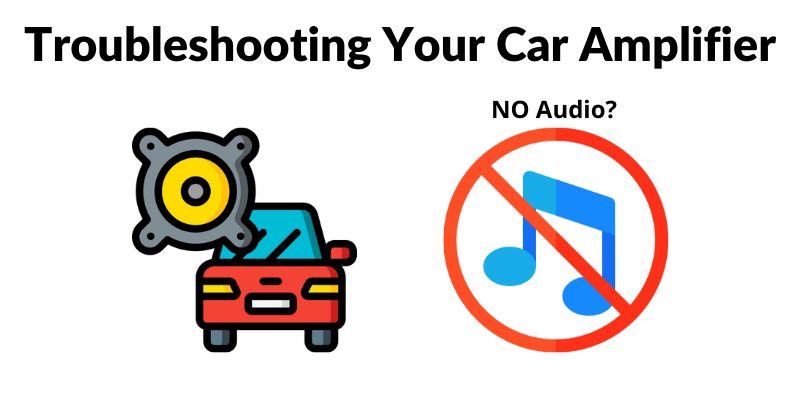Troubleshooting your Car Amplifier
TROUBLESHOOTING the operating environment the car amplifier is working under.
Before removing your car amplifier, refer to the list below and follow the suggested procedures. Always test the speakers and their wires first.
AMPLIFIER WILL NOT POWER UP
- Check for good ground connection.
- Check that the remote DC terminal has at least 7V DC this may vary with different car amplifiers some might be at least 3V.
- Check that there is battery power on the “+” terminal.
- Check that there is at least 12V.
- Check all FUSES, replace if necessary.
- Check that Protection LED is not lit or illuminated. If it is lit, shut off the amplifier briefly and then repower it.
HIGH HISS OR ENGINE NOISE (ALTERNATOR WHINE) IN SPEAKERS.
Disconnect all RCA inputs to the amplifier, if hiss/noise disappears, then plug in the component driving the amplifier and unplug its inputs. If hiss/noise disappears, go on until the faulty/noisy component is found.
It is best to set the amplifier input level control as insensitive as possible (as low as possible). The best subjective S/N ratio is obtainable this way. Try to drive a high signal level as possible from the head unit (without distortion) and the amp input level as low as possible.
ENGINE NOISE (STATIC TYPE)
- This is usually caused by poor quality RCA cables, which can pick up radiated noise. Use only the best quality cables, and route them away from the power cables.
ENGINE NOISE (ALTERNATOR WHINE)
- Check the speaker leads are not shorted to the vehicle chassis.
- Check that the RCA grounds are not shorted to the vehicle chassis.
- Check that the head unit is properly grounded.
PROTECTION LED COMES ON WHEN THE AMPLIFIER IS POWERED UP.
- Check for short circuits on speaker leads.
- Check that volume control on the head unit is turned down low to prevent overdriving.
- Remove speaker leads, and reset the car amplifier. If the Protection LED still comes on, then the amplifier is faulty and needs servicing.
- The amplifier will shut down automatically when the temperature of the unit got up to 80°C. This will protect the unit from damage.
AMPLIFIER(S) GETS VERY HOT.
- Check that the minimum speaker impedance for the amp model is correct.
- Check for speaker shorts.
- Check that there is good airflow circulation around the amplifier. In some applications, an external cooling fan may be required.
DISTORTED SOUND.
- Check that the Level control(s) is set to match the signal level of the head unit. Always try to set the Input Level as low as possible.
- Check that all crossover frequencies have been properly set.
- Check for short circuits on the speaker leads.
HIGH SQUEAL NOISE FROM SPEAKERS.
This is always caused by a poorly grounded RCA patch cord.
NO OUTPUT
- Check that all Fuses are OK.
- Check that amplifier is properly grounded.
- Check that the remote input (Turn-On) has at least 7VDC but this may vary with different car amplifiers same may be 3VDC.
- Check that the RCA audio cables are plugged into the proper inputs.
- Check all speaker wiring.
LOW OUTPUT
- Reset the level Control
- Check the crossover control settings (if there are any)
AUDIO PRESENT IN ONLY ONE CHANNEL
- Check the RCA interconnect cables
- Check all speaker wiring
SQUEALING NOISE FROM SPEAKERS
- Check for improperly grounded RCA interconnects.
WARNING!
1. Over high volume will damage your speakers.
2. Be cautious when you use the amplifier near the gasoline tank and electric wires.
3. Protect the connecting wires and parts to avoid any damage or short circuit.
4. The power must belee from the anode of the battery via FUSE.
5. The sound system must be in turning-off situation when you check the amplifier.
6. Be sure that you use the same type of FUSE when you need to replace it.


